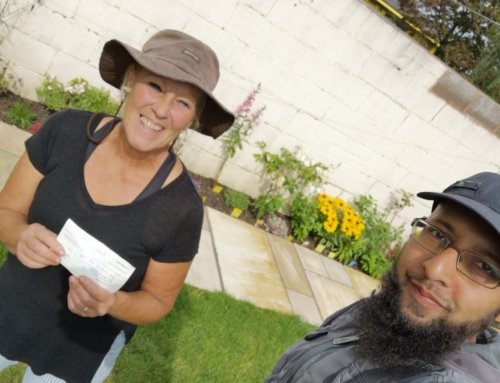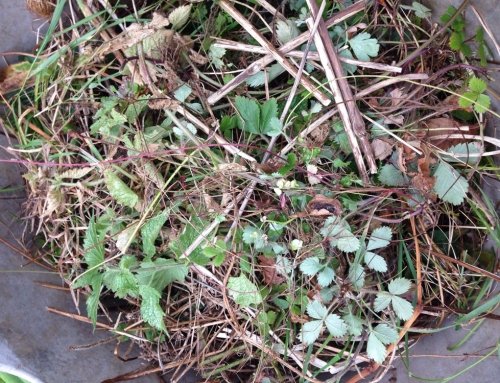By Fred
.
Water harvesting is invaluable, and winter is a good time to monitor a new system and assess how successful/workable it it. If you are harvesting rain that falls in the summer, you can help yourself through the dry July’s and Augusts.
.
This is a rain water collection system made from materials that were found and donated.
.
.
.
.
The guttering comes off a small shed roof and fills the first largest butt. Then a syphon takes it to the next butt, and another syphon to the third butt. A syphon is a pipe that has water all the way along it from one body of water to the next. It can go above the water levels and it will move the water from the highest to the lowest, always evening out the two levels. This is due to atmospheric pressure. The advantage of a syphon over an overflow is that there is no need to make a hole in the butt which will lower the level in the butt. It also requires no work, energy or materials to seal the hole (overflow fittings are quite a few pounds to buy. The hole has to be drilled to match the pipe fitting, and the fitting needs a bolt and seal that is tight and water proof. Basically you are making a hole and having to seal it again)!
.
.
.
.
The syphon’s made here consist of a piece of old hosepipe, and a lemonade bottle at each end. The pipe goes into the bottle all the way to the bottom. It is wired to the rim, so it does not pull out. There are three 2cm holes in the side of the bottle near the top. (this is needed to allow enough water flow to the pipe, as it is constricted by the bottle top otherwise). And the bottle is weighed down with a stone. The length of hose is measured so that the bottle just sits vertically on the floor of each water butt. The reason for having all this, is so that the syphon is maintained even when the level in the water butt goes below the level of the pipe. What can happen is that all the water is used up, and the bottom of the pipe gets air into it, and as soon as it gets air in it, it breaks the syphon. So the maintenance of a bottle-level of water at the end of each pipe, means that the water stays in the pipe, with no air.
.
.







